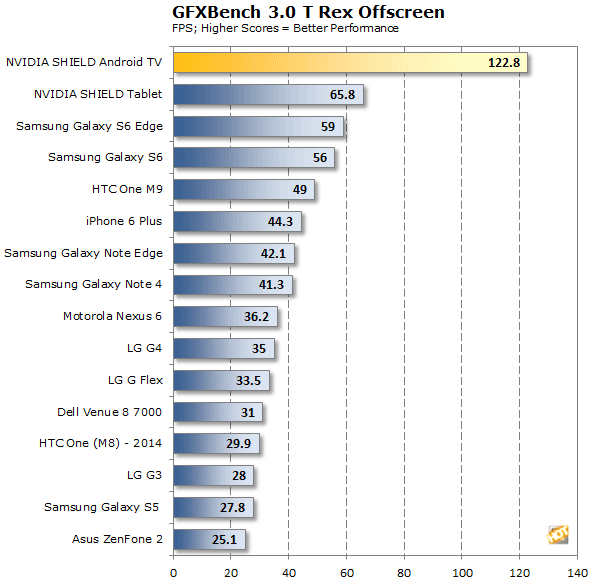We’re not going to dwell much on performance, because the SHIELD Android TV packs way more horsepower than it needs for the vast majority of tasks it was designed to do. Still, we wanted to see how the Tegra X1 stacked up to the Tegra K1 in the SHIELD Tablet, and newer, powerful SoCs, like the Qualcomm Snapdragon 810 in the HTC One M9 and Exynos 7420 in the Galaxy S 6. We also included a ton of other reference data for perspective as well...
In GeekBench, the Tegra X1 puts up the best single-threaded performance and just missed the mark set by the octa-core Exynos chips in the latest Samsung phones. Versus the Snapdragon 810, Intel chips, or older SoCs, there’s no comparison here.
GFX Bench focuses solely on GPU performance. And in this regard, the Tegra X1’s 256-core Maxwell-based GPU simply decimates all. The Tegra X1’s graphics performance is twice as high as its nearest non-NVIDIA-build competitor.
3DMark Ice Storm tells a similar story. The Tegra X1 inside the SHIELD Android TV is nearly twice as fast as the Snapdragon 810 in this benchmark.
Finally, we also monitored the SHIELD's power consumption in a few different circumstances. When idling, but with an image being displayed on-screen, the device pulled about 3 watts from the wall. While streaming a video from YouTube, power jumps to about 6 watts (streaming from GRID was also about 6 watts). And while running a native game, power just missed the 20 watt mark.
With power consumption in that upper range, the SHIELD Android TV needs to be actively cooled, but the fan is basically inaudible. You have to put your head right up on the device to hear even the slightest whir. And it barely gets warm to the touch, even after hours of hard use.











